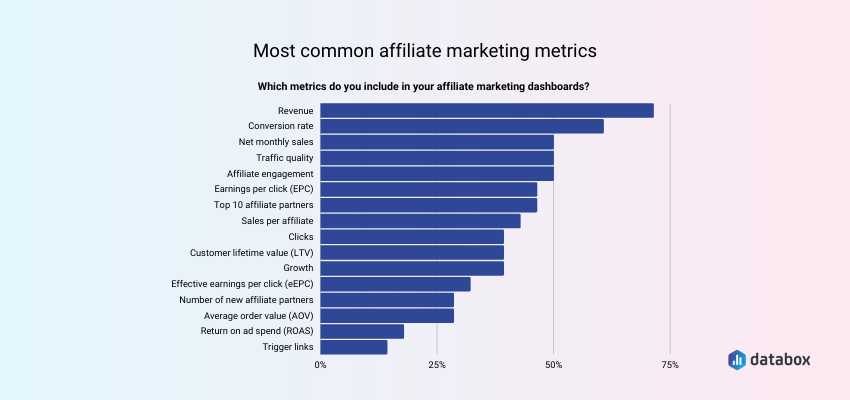Affiliate Marketing Mistakes to Avoid: Tips from Successful Affiliates
Every blog post is an opportunity to avoid mistakes in our affiliate marketing game and set the stage for success.
Affiliate marketing isn’t just a side hustle; it’s a dynamic dance between strategy and opportunity.
Affiliate marketing means earning commissions by promoting products on the Internet. It helps earn from each sale. Common affiliate marketing mistakes are choosing goods without doing research, neglecting audience needs, and only depending on paid advertising.
It’s like having a business partner that works as hard as you do, and yes, it’s as exciting as it sounds.
But let’s not get carried away.
There are bumps in the road.
The truth is, that the affiliate marketing journey is riddled with mistakes that could trip up even the most enthusiastic marketers.
However, we’ll take a look at the best methods to avoid common affiliate marketing mistakes.
The takeaways from this article are:
- Navigating the Selection of Products and Niches
- Emphasizing the Significance of Quality Content
- Comprehending the Target Audience
- Enhancing Visibility with SEO in Affiliate Marketing
- Overreliance on Paid Advertising
- Monitoring and Assessing Performance Metrics
So here we go.
Section 1: Choosing the Right Path: Navigating Product and Niche Selection
Mistake: Selecting Without Research
One of the main affiliate marketing mistakes is blindly picking products or niches without diving into the depth of research.
It’s like setting sail without a map .
You might reach your destination, but chances are you’ll end up lost at sea.
Many aspiring affiliates fall into this error, attracted by shiny opportunities without understanding the market dynamics.

Insights from Successful Affiliates:
- Know Your Audience: Successful affiliates understand their audience inside out. They don’t just guess; they meticulously study their target demographic, identifying their needs, preferences, and pain points. This knowledge becomes the compass guiding their product and niche decisions.
- Passion Meets Profit: Aligning personal interest with market demand is a winning formula. Successful affiliates often choose niches or products they are genuinely passionate about. This not only keeps them motivated but also allows them to create authentic, compelling content that resonates with their audience.
- Competition Analysis: Instead of fearing competition, successful affiliates embrace it. They conduct thorough competitor analysis, identifying gaps or areas where they can provide unique value. This strategic approach ensures they enter markets with a clear understanding of how to stand out.
Read More: Is Blogging Still Profitable For Affiliate Marketing?
Examples of Affiliate Marketing Power:
- Pat Flynn – Smart Passive Income: Pat Flynn, is a renowned affiliate marketer, who earns $ 170,000 per month. He has consistently excelled in niche selection. His focus on transparency and delivering value has made him a trusted authority in the online business and passive income space.
- The Wirecutter: Acquired by The New York Times, The Wirecutter is a prime example of successful product selection. Their commitment to in-depth product testing and unbiased reviews has made them a go-to resource for consumers seeking trustworthy recommendations.
- NerdWallet: NerdWallet has carved a niche in the personal finance space. By providing comprehensive and accurate information on financial products, they’ve become a trusted source for users looking to make informed decisions.
Choosing the right products and niches isn’t just a checkbox; it’s an art form that successful affiliates master.
Through diligent research, audience understanding, and strategic analysis, they maintain a course aimed for success. They take care to avoid glaring affiliate marketing mistakes.
Section 2: Sailing with Success: Navigating Target Audience Needs
Significance of Understanding the Target Audience:
Understanding your target audience is like the North Star of affiliate marketing.
It’s not just about selling products; it’s about forming a connection with real people.
Your audience isn’t a faceless mass – they’re people with unique needs. They have preferences, and challenges. Ignoring this vital aspect is akin to sailing blindfolded.; you might move, but you won’t know where you’re headed.

Affiliate Marketing Mistake: Ignoring Audience Needs
The cardinal sin here is assuming you know what your audience wants without actually listening to them.
This misstep often leads to disconnected strategies that miss the mark.
Your audience is the compass guiding your decisions, and ignoring their needs is a surefire way to lose direction.
Tips for Meeting Audience Demands:
- Create User Personas: Successful affiliates invest time in creating detailed user personas. These fictional representations of their ideal audience help in visualizing and understanding the diverse needs and preferences of their target demographic.
- Engage in Conversations: Communication is key. Successful affiliates actively engage with their audience through various channels – social media, forums, comment sections, and more. By participating in conversations, they gain real-time insights into what their audience is talking about, interested in, and concerned about.
- Regularly Update Buyer Personas: The market evolves, and so do your audience’s needs. Successful affiliates don’t treat buyer personas as static documents. They regularly update them based on changing trends, feedback, and shifts in consumer behavior.
- A/B Testing: Tailoring strategies isn’t a one-size-fits-all endeavor. Successful affiliates leverage A/B testing to experiment with different approaches, headlines, or content styles. This data-driven method allows them to refine their strategies based on what resonates most with their audience.
Read More: 9 Crucial Secrets About Affiliate Marketing Known To Successful Bloggers
Example of Audience-Centric Success:
HubSpot Academy: HubSpot, known for its inbound marketing expertise, tailors its content to various segments of its audience.
HubSpot Academy, specifically, provides educational content in a way that suits different learning styles and preferences. This ensures that they cater to the diverse needs of their audience.
Understanding your audience isn’t a checkbox; it’s an ongoing journey. Successful affiliates treat their audience as collaborators, not just consumers.
By listening, adapting, and responding to their needs, they ensure that their strategies are not only effective but also long lasting. That caters for the ever-changing landscape of affiliate marketing.
Section 3: Crafting Success: The Crucial Role of Quality Content
Importance of High-Quality Content:
For successful affiliate marketing you need to remember that content is the unsung hero. Its something that can either make or break your journey.
High-quality content isn’t just filler; it’s the bridge connecting you with your audience.
It builds trust, driving conversions. It’s the difference between a fleeting click and a long-lasting connection.

Mistake: Focusing Solely on Promotion
A common affiliate marketing mistake is tunnel vision of promotion without focusing on quality content creation.
It’s like building a beautiful storefront but neglecting the products inside.
When affiliates prioritize promotion over content quality, the result is often a shallow engagement that fails to captivate the audience.
Examples of Content-Centric Success:
- Neil Patel – Quick Sprout: Neil Patel, a digital marketing guru, exemplifies the power of quality content. His blog, Quick Sprout, is a treasure trove of in-depth guides, insightful infographics, and comprehensive articles that not only educate but also build trust. The emphasis on content quality has established him as an authority in the digital marketing space.
- Wirecutter by The New York Times: Once again, The Wirecutter makes an appearance, this time for its commitment to detailed and impartial product reviews. By focusing on creating content that helps consumers make informed decisions, Wirecutter has become a go-to resource, trusted for its reliability and thoroughness.
- Affiliate Marketing Dude – Marcus Campbell: Marcus Campbell, known as the Affiliate Marketing Dude, emphasizes content creation through his video tutorials and blog posts. By providing valuable insights into affiliate marketing strategies, he not only promotes products but also educates his audience, creating a loyal following.
Read More: Important Actions To Take For Monetizing Your Blog With Affiliate Marketing
Tips for Prioritizing Content Creation:
- Educate and Inform: Create content that goes beyond sales pitches. Educate your audience, addressing their pain points and providing solutions. Informed audiences are more likely to trust your recommendations.
- Consistency Matters: Regularly update your content. Whether it’s blog posts, videos, or podcasts, consistency builds credibility. Blogging consistency keeps your audience engaged over the long haul.
- Visual Appeal: Invest in visually appealing content. From engaging graphics to well-designed layouts, visual elements enhance the overall quality and shareability of your content.
High-quality content isn’t just the icing on the cake; it’s the foundation for successful affiliate marketing.
Those who recognize its importance not only attract more eyes but also forge lasting connections with their audience, setting the stage for sustained success.
Section 4: Mastering Discovery: The Vital Role of SEO in Affiliate Marketing
Crucial Role of SEO in Affiliate Marketing Success:
Search Engine Optimization (SEO) is the booster that will propel your affiliate marketing to new heights.
In a digital landscape saturated with content, SEO acts as the magnet attracting search engines to your content.
It’s not just about keywords; it’s about visibility, credibility, and ultimately, success.

Affiliate Marketing Mistake: Neglecting SEO Practices
The cardinal sin here is treating SEO as an afterthought or, worse, neglecting it altogether. It’s akin to opening a shop in a hidden alley instead of a bustling street.
Neglecting SEO practices severely impacts your visibility, making it challenging for potential customers to find your content amidst the vast digital expanse.
Tips for Incorporating SEO into Affiliate Marketing Strategies:
- Keyword Research: Successful affiliates understand the power of keywords. They conduct thorough keyword research to identify terms relevant to their niche. This helps them optimize their content for search queries that matter to their audience.
- Quality Content is King: SEO isn’t just about stuffing keywords; it’s about providing valuable, relevant, and high-quality content. Search engines, like Google, reward content that answers user queries and provides a positive user experience.
- Backlink Building: Building a network of high-quality backlinks is a cornerstone of successful SEO strategies. Affiliates who understand this actively seek opportunities to collaborate, guest post, and participate in communities to earn backlinks from authoritative sources.
- Mobile Optimization: With the rise of mobile users, successful affiliates prioritize mobile optimization. Ensuring your content is accessible and user-friendly on various devices contributes to better SEO rankings.
Learn more about the latest trends in SEO with us.
Example of SEO-Centric Success:
- Smart Passive Income – Pat Flynn: Pat Flynn not only excels in content creation but also prioritizes SEO. His blog, podcasts, and videos are crafted with SEO in mind, making them discoverable to a wider audience. This focus on SEO has significantly contributed to the success of Smart Passive Income.
- Future-Forward Advice: As search algorithms evolve, so must your SEO strategies. Keep an eye on emerging trends, adapt your content to align with search engine preferences, and stay committed to optimizing your digital presence. Remember, in the world of affiliate marketing, visibility often makes the difference between obscurity and success. Don’t let neglecting SEO be the anchor that holds you back; instead, let it be the wind beneath your wings, propelling you to new heights.
Section 5: The Mistake of Solely Relying on Paid Advertising
Balance Organic With Paid Advertising
While paid advertising can be a powerful engine for driving traffic and conversions, banking solely on this strategy is a slippery slope.
Overlooking the potential of organic methods and social media can limit your reach. It’s like placing all your eggs in one basket.
In fact, it leaves your affiliate marketing efforts vulnerable to the volatile landscape of paid ads.
Importance of Incorporating Organic Methods and Social Media:
- Sustainable Growth: Organic methods, such as content marketing and SEO, contribute to sustainable, long-term growth. While paid advertising provides immediate results, organic methods build a foundation that continues to pay off over time.
- Authentic Connection: Social media isn’t just a megaphone for promotions; it’s a space for building authentic connections with your audience. Engaging content, community interaction, and relationship-building contribute to a loyal following that goes beyond transactional relationships.
- Diversification Mitigates Risk: Relying solely on paid advertising leaves you vulnerable to changes in ad costs, algorithms, or market dynamics. Incorporating a mix of organic methods and social media creates a diversified strategy that can weather industry shifts.
Case Studies of Successful Affiliates Balancing Paid and Organic Methods:
- Moz: Moz, a leading SEO software company, demonstrates the power of balancing paid and organic methods. They do invest in paid advertising for immediate visibility. Yet their strong emphasis is on content marketing, thought leadership, and community engagement through organic channels. This has solidified their industry authority.
- Nomadic Matt: Travel blogger Nomadic Matt employs a balanced approach by combining paid advertising with organic methods. While he runs targeted ads to reach new audiences, his organic content, including detailed travel guides and personal stories, contributes to a loyal community and sustainable traffic.
Advice for Balancing Strategies:
- Set Realistic Budgets: Allocate budgets wisely, considering the long-term benefits of organic methods alongside the immediate impact of paid advertising.
- Consistent Content Creation: Regularly create valuable content that resonates with your audience. This not only aids organic growth but also provides shareable assets for social media promotion.
- Community Engagement: Actively engage with your audience on social media. Respond to comments, participate in discussions, and foster a sense of community. A loyal following can become your best ambassadors.
For successful affiliate marketing, a diversified approach is the key to resilience and sustained success.
Balancing paid advertising with organic methods and social media actually broadens your reach. It also ensures that your affiliate marketing strategy stands on a solid foundation.
Section 6: Mastering the Numbers: The Imperative of Tracking and Analyzing Performance
Importance of Tracking and Analyzing Performance Metrics:
In the intricate dance of affiliate marketing, understanding the performance metrics isn’t an option—it’s a necessity.
Tracking and analyzing data isn’t just about numbers; it’s the compass guiding your decisions. It reveals insights that can transform your strategies from guesswork to precision.

Mistake: Neglecting Performance Data and Its Impact on Optimization
The pivotal mistake here is treating affiliate marketing as a shot in the dark, neglecting the treasure trove of data available.
When performance metrics are brushed aside, it’s like navigating a ship without instruments – you might move, but you won’t know if you’re headed toward success or peril.
Failure to track and analyze performance data cripples your ability to optimize and refine your strategies.
Tools and Methods for Monitoring and Improving Performance:
- Google Analytics: A cornerstone for many successful affiliates, Google Analytics offers a comprehensive view of website performance. From user behavior to traffic sources, affiliates leverage this tool to make informed decisions about content, audience targeting, and marketing strategies.
- Affiliate Tracking Software: Specialized affiliate tracking tools like Post Affiliate Pro, HasOffers, or Tune provide a centralized hub for monitoring affiliate activities. These tools offer real-time insights into clicks, conversions, and commission tracking.
- Conversion Rate Optimization (CRO): Successful affiliates prioritize CRO, using tools like Optimizely or VWO to conduct A/B testing and optimize landing pages. By analyzing user behavior, they enhance the user experience and boost conversion rates.
- Social Media Analytics: For those incorporating social media, platforms like Facebook Insights or Twitter Analytics are invaluable. These tools offer insights into audience demographics, engagement, and the performance of promotional content.
- Email Marketing Analytics: Email remains a powerful channel for affiliates. Tools like Mailchimp or Constant Contact provide analytics on open rates, click-through rates, and subscriber behavior, guiding affiliates in refining their email campaigns.
Read More: Navigating the World of Affiliate Marketing for Bloggers
Future-Forward Analytics Advice:
- Set Clear Goals: Define clear, measurable goals for your affiliate marketing efforts. Whether it’s increasing website traffic, improving conversion rates, or boosting revenue, having well-defined objectives makes performance analysis more meaningful.
Regular Audits: Conduct regular audits of your performance metrics. Trends and patterns may emerge over time, and staying vigilant allows you to adapt your strategies based on changing circumstances. - Stay Informed on Industry Trends: The world of digital marketing is ever-evolving. Successful affiliates stay informed about industry trends and updates to understand how external factors might impact their performance metrics.
In the world of affiliate marketing, data is gold. Successful affiliates treat performance metrics as a roadmap, guiding them toward success.
By embracing analytics tools and methodologies, they not only track their progress but also continually refine and optimize their strategies for peak performance in the dynamic digital landscape.
FAQs
1. What are the affiliate marketing mistakes to be avoided by beginners?
- Joining a paid affiliate program: If you’re just starting out, you shouldn’t pay to join an affiliate scheme.
- Choosing the wrong product: Think about the needs and interests of your audience when choosing goods to promote.
- Choosing the wrong niche:If you want to find the right topic, look for the one that has the most demand. You should also think about how many other products are in that niche and how you will be different from them.
- Joining too many affiliate programs: If you work with too many affiliate programs, it can get stressful.
2.What mistake do a lot of people make in affiliate marketing?
Buying things without doing research can be bad. A thorough evaluation of your product is important for success and makes sure that it meets the wants of your audience.
3.Why is SEO so important for affiliate marketing?
SEO makes things more visible, and ignoring it can hurt your chances of making sales and growing your business.
4.What is the best way to strike a balance in affiliate marketing?
Using a mix of paid ads, organic methods, and social media keeps things interesting for your audience and helps you stay successful over time.
5.What tools help in monitoring affiliate marketing performance?
Tools like Google Analytics and affiliate tracking software help keep track of metrics, which lets you look at success and keep making changes to get better results.
Related Posts
Navigating the World of Affiliate Marketing for Bloggers
Is Affiliate Marketing Safe? The Risks And Remedies
What To Do After Learning Affiliate Marketing?: Applying The Best Practices
Best Practices In Promoting Affiliate Links (For Increased Earnings)
Conclusion
In conclusion, avoiding mistakes in affiliate marketing means making smart decisions.
You first, need to learn from affiliates who have already done well to choose the right products and niches. It’s like having a tour guide with you.
Next, find out what the audience (the people you want to reach) really wants. Get ideas from useful tips and true stories of people who have met their wants.
It’s very important to create quality content, like articles or videos. It’s like creating something that people like and use. Don’t forget to use tips to make sure the content is always great.
Search Engine Optimization, or SEO, is like having tools that help people find you on the web. Learn how to use it well so that more people can find what you’re posting.
It might not be the best idea to only use paid ads to promote your business. It is better to use a mix of methods, such as nature and social media. You can find balance by reading about real people who have done well.
Finally, keep an eye on your progress by keeping track of important numbers. Every time you do work, use tools and tips to get better at it.

